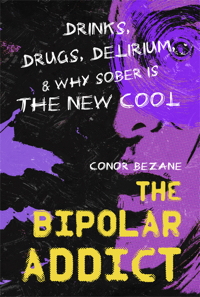
The rate of heroin-related overdose deaths nearly quadrupled between 2002 and 2013, and more than 8,200 people died in 2013.
The current heroin epidemic is killing thousands each year, and the problem only gets worse over time.
According to the CDC, “the rate of heroin-related overdose deaths nearly quadrupled between 2002 and 2013, and more than 8,200 people died in 2013. Forty-five percent of people who used heroin were also addicted to prescription opioid painkillers.”
Back in 1972, scientists at Johns Hopkins University found that the brain’s neurons (cells that carry information from the brain to other parts of the body) had specific receptor sites for opiate drugs, which include heroin, opium, morphine, and codeine.
The doctors found that the active chemical in these opiates — morphine — has a makeup similar to endorphins, naturally occurring chemicals, similar to opiates, that induce pleasure or euphoria when someone experiences stress or pain.
When opioids bond with the receptors in the brain, they give the illusion that there is a lower degree of pain and increase levels of dopamine.
Opioids such as Vicodin and Oxycontin are considered gateway drugs to heroin. An addiction to these opioids could begin with abuse when the painkillers are prescribed legally after surgery or dental procedures. A common means of getting high on opioids is to crush the pills and snort them. Since they are more expensive than powder heroin, many people get started on heroin because it offers the same — or a more intense — high but is cheaper.
For example, heroin costs between $15 and $20 per 0.1 mg dose in Ohio, according to heroin.net. In comparison, Oxycontin costs $50-80 a pill when sold on the street ($6 at the pharmacy).
When a person shoots heroin for the first time, the experience will most likely be highly uncomfortable and vomit inducing. But creatures of addiction will try and try again and, after a few uses, in their eyes, the benefits outweigh the negatives.
At the beginning of the injection, there’s a rush that lasts only a couple of minutes but feels like an intensified sexual orgasm. This is followed by a high that — as the chemicals make it through the bloodstream — lasts for four or five hours. The high is a relaxed, sleepy, and warm sensation that causes the user to want more and more as tolerance elevates. It’s easy to develop a $200-per-day habit.
Eight to twelve hours after the last dose of heroin, an addict’s eyes begin to tear and flu-like symptoms take hold.
Addiction happens when, after a continuing supply of heroin, the brain adapts, changing its circuitry. Without the heroin, the body experiences nausea, cramps, muscle spasms, fever, diarrhea, and anxiety. It’s a chemical imbalance in the brain, brought on by the lack of heroin.
Withdrawal effects intensify after a period of 24-48 hours since the last dose. Brain damage is common.
According to the National Institute on Drug Abuse, “studies have shown some deterioration of the brain’s white matter due to heroin use, which may affect decision-making abilities, the ability to regulate behavior, and responses to stressful situations.”
There are multiple ways of quitting heroin. You can do it cold turkey — which results in 5-7 days of enhanced flu-like symptoms. However, quitting that way can be fatal, especially if one is elderly or otherwise unhealthy. It is recommended that one taper down their heroin intake before going cold turkey.
One of the most common ways to quit is to go on methadone, which is an opioid antagonist that can be administrated at state-run (i.e., free) or private clinics. Rehab is another option. There, you can detox and gain the emotional support needed to quit heroin, but this is the most expensive approach. Narcotics Anonymous is another helpful free resource.
Heroin dependence is an agonizing affliction. As the addiction epidemic grows, we need better resources to help people quit. Free methadone clinics are a good start. But the average heroin addict probably can’t afford rehab, which is the easiest, least painful way of quitting. We need rehab scholarships for those who can’t afford treatment.
Heroin is ugly. It’s an opioid that destroys lives. But especially with the help of family, friends, methadone, or rehab, you can kick the habit and go on to live a healthy, addiction-free life.
I have snorted heroin a few times, and all it gave me was a body buzz. Luckily I never got addicted. This story is a precautionary tale, a fair warning about the dangers of heroin — the most addictive drug of them all. Avoid at all costs. Or if you are already addicted — seek help. It’s out there waiting for you.







